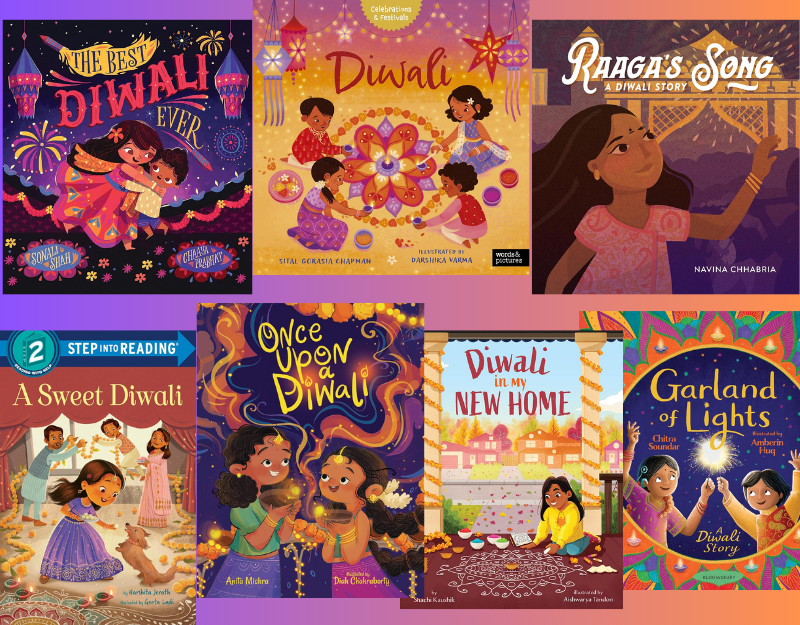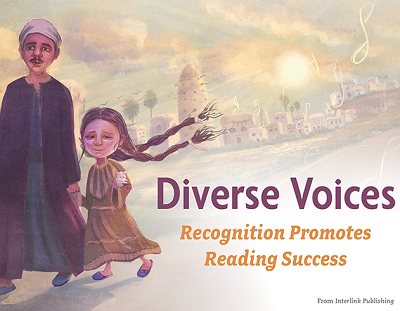Review of the Day: The Penderwicks on Gardam Street by Jeanne Birdsall
 The Penderwicks on Gardam Street
The Penderwicks on Gardam Street
By Jeanne Birdsall
Alfred A. Knopf (a division of Random House)
$15.99
ISBN: 978-0-375-84090-6
Ages 7-13
On shelves now
I can’t exactly remember what it was that kept me from reading The Penderwicks of Gardam Street the minute it came out on bookstore and library shelves. As a children’s librarian I certainly enjoyed Ms. Birdsall’s previous title, The Penderwicks, which garnered itself a bright and shiny National Book Award. Then there was all that talk about a resurgence of "old-fashioned" children’s books and how Penderwicks marked a nostalgia trend. I didn’t like that notion, and maybe that feeling ate away at the good time I’d had reading the novel. Maybe I felt guilty for liking it so much. Maybe that’s what slowed my hand when it came to reading and reviewing the next Birdsall title. "I’ve read the first one," thought I. "How much more different could it be?" But then all these librarians and teachers stared telling me how good the sequel was. No, not just good. "Better than the original." Those were the exact words I heard from three different pairs of lips. And the general rule states that if three different pairs of lips tell you to read something, it is wise to follow their advice. So I finally finally FINALLY got around to picking up a copy and reading it and . . . . shoot. They were right. It really is better than the original. And the original, for all my hemming and hawing, was pretty darn good in its own right too.
Under normal circumstances Aunt Claire’s visit to the Penderwick girls (Rosaline, Jane, Skye, and Batty) is a time of fun and jubilation. But when Claire announces that it was Mr. Penderwick’s wife’s dying wish that he eventually date and remarry, shock hits the girls. Rosalind, the eldest, takes it particularly hard and decides to institute a plan to save their father from the claws of some foul woman by setting him up on purposefully horrendous dates (thereby turning him off of the idea altogether). Of course there are other concerns clawing at the girls’ attention. Skye and Jane have switched their homework yet again, and unfortunately it worked so well that Skye’s English teacher has decided to stage "her" play with you-know-who in the lead. Rosalind, on top of this dating crisis, is dealing with the unwanted (?) attentions of next door neighbor Tommy Geiger. And even Batty has a situation of her own, involving the adorable little boy neighbor (and his beautiful and intelligent mother) and a creepy fellow lurking about the street whom she calls "Bug Man". Fortunately everything works out well in the end with the girls happier, wiser, and just as amusing as ever.
ADVERTISEMENT
ADVERTISEMENT
I know that there are some parents, teachers, and librarians out there amongst you for whom the term "classic" when applied to a contemporary work of children’s fiction means only one thing to you: twee. Ootsy-cutesy. Sunshine, flowers, and suburbs full of white children acting as if it is 1959 and they haven’t a care in the world. Well, let’s examine this, shall we? First off, there’s no denying that this is a book about four relatively well-off white girls living in the suburbs in a big beautiful house. Let the record also show, that in her defense Jeanne Birdsall has not pulled the old let’s-just-throw-in-a-black-best-friend move that so many authors do in a fit of white guilt. There are kids of different races here but they fit in within the context of the story and not in a way that feels forced. And I know that everyone likes to discuss the Birdsall nostalgia factor, but does anyone properly credit how she doesn’t fall back on the usual character stereotypes? Skye acts somewhat like a jock, but her interests lie in being smart in math and extremely tidy. Jane, in comparison, is the romantic Anne-of-Green-Gables-type of gal who is deeply into writing and daydreaming but who, on the side, turns into a Cockney soccer player when she gets into a skirmish on the field. These kids have a little depth to them, often when you least expect it.
Maybe the best argument that the book belongs to the past (though it seems pretty contemporary, just without iPods and things) are the two moments when Mr. Penderwick makes Latin references that any child familiar with the Harry Potter books would recognize. The first happens on page 50 when he mentions the word "bellatrix" and no one follows it up with the accompanying "Lestrange". The second time happens on page 65 when he describes his latest date with the term "cruciatus." The forbidden curse unfamiliar to kids? It is the only evidence that this family of readers isn’t living in the here and now. The evidence against this theory? Well, there are little moments like when the rules on entering into Quigley Woods are discussed. In the past a kid would wander abandoned would with impunity. These days it’s a good idea just to have a couple ground rules here and there.
I’ll just sum up the name of the game here in one word: Subversive. This is a deeply subversive children’s novel. Aw, look at your little skeptical faces. You don’t think I can back that statement up, do you? Well, consider how Ms. Birdsall both acknowledges and plays with our expectations. You walk into this novel with a certain attitude on how it will be portrayed. Then you get to page seventy-four when Jane makes the argument that their father should date because: " `men have needs . . . I read that in a magazine.’ `What needs?’ asked Batty. `What magazine?’ asked Skye." Cheeky. You won’t find that conversation in an Elizabeth Enright novel, I’ll tell you that right now.
I do love the characters too. I was particularly fond of Skye since she reminded me of my best friend growing up. I knew a Skye type once. In terms of character development Birdsall respects and provides the proper amount of small, almost invisible moments that make a person who they are. The telling snippets that expose our humanity beneath the exterior. Here’s an example: There is a moment when Rosalind has been so wrapped up the notion of her father dating again that she has wandered off and failed to tell Batty her usual bedtime story. Batty is fond of repetition and desperately needs her story. When Rosalind finally comes home her over-tired little sister’s interior monologue works itself up and up until she’s in tears (I found the line about being worried that Skye would think her a coward particularly touching) and Rosalind finally takes her to bed and gives her the story. The moment could be done in such a way that Batty comes off as looking bratty, and really the fact that the child doesn’t high herself henceward is a testament of writing right there. But for me, the really telling point is right at the end of the chapter where it says of Rosalind, " `Sleep well, Battikins,’ she whispered, then watched over her for a long time, just in case she woke up again, still wanting a story." In a way, the book is also about the selfishness of childhood. Every kid just cares about what they care about. It takes an extraordinary amount of energy sometimes for a person, be they old or young, to crawl out of their own little shell of self-pity to see and aid a fellow human being, no matter how close to them they may be.
ADVERTISEMENT
ADVERTISEMENT
Finally, it’s funny. That probably should have been my first point lo these many paragraphs ago. It’s true in any case. I think I may have snorted in a particularly unladylike fashion when I read the poem that Jane wrote for Skye’s homework assignment which went, "Tra-la the joy of tulips blooming, Ha-ha the thrill of bumblebees zooming. I’m alive and I dance, I’m alive though death is always looming" (remember what I said about subversion earlier?).
I was at an event recently where I expressed my pleasure with this book. My companion nodded politely and listened, but then asked if I didn’t find the story just a bit . . . well . . . . much. I could see where she was coming from. We’re dealing with a book that contains something called the "Save-Daddy Plan". On top of that the answer to the girls’ woes is so seemingly obvious (to say nothing of the last-minute villain who would have gotten away with it too if it weren’t for those meddling kids and their pesky dog) that even the youngest reader is bound to guess where the storyline is going. I’ll grant that, but the degree to which a children’s book is predictable doesn’t necessarily bother me. When you judge a book written with a child audience in mind, familiar tropes are standard fare. What’s important is how well the author plays with them. J.K. Rowling, after all, was not the first author to write about a kid going off to a school for magic. She just happened to write it best. Likewise, Birdsall isn’t the first writer I’ve seen to come up with a storyline that involves matchmaking and the like, but she writes so bloody well that I doubt any child, no matter how jaded, is going to mind if they suspect where the plot is headed.
Kids actually dig these books, which shouldn’t strike you as much of a surprise. For devoted readers there’s a veritable bibliography within these pages as well. Copious amounts of Eva Ibbotson, Sense and Sensibility, The Phantom Tollbooth, and on and on. Birdsall’s writing is also extremely accessible. Without relying on hoopla and bombast she ropes you in with just a sentence or two. There’s something for everyone here. For the kids that like "old-fashioned stories" you can make the argument that Birdsall is conjuring up the distant past (what other novel out there today contains a kid with the name "Tommy" for heavens sake?). For those of you who couldn’t care less about books with a classic feel and just want something funny, well written, and enticing, The Penderwicks on Gardam Street has your number. Even if you didn’t much care for the first one, you’re going to find a lot to love here. Better than the original.
On shelves now.
Notes on the Cover: Oooooh. Now I get it. Geez, David Frankland, do you have to be so clever? I spent half that book trying to figure out when one of the girls was going to tackle a football player. Didn’t occur to me that it might be a metaphor. Oh, you’re good. Extra points for the image of the cat diving for the football on the inside jacketflap.
Other Blog Reviews: bookshelves of doom, Jen Robinson’s Book Page, Original Content, Kids Lit, Book Nut, Read Read Read, ShelfTalker (reviewed by a 14-year-old student), Necessary Chocolate, Booktopia, Infodad.com, Books We Love, Shelf Employed, Bending Bookshelf, Wholesome Fun, lady_schrapnell, The Book Report, and Never Jam Today
Other Online Reviews: The Washington Post, The Boston Globe, The Christian Science Monitor, San Francisco Chronicle, The Baltimore Sun, Seattle Post Intelligencer, Milwaukee Journal Sentinel, Kidsreads.com, Commonsense Media, and Edunic
Misc:
-
This is new. I’ve never run into a Publishers’ Weekly title profile for a book in my searches. Indicative of something, I’m sure. I just don’t know what that might be.
Filed under: Reviews
About Betsy Bird
Betsy Bird is currently the Collection Development Manager of the Evanston Public Library system and a former Materials Specialist for New York Public Library. She has served on Newbery, written for Horn Book, and has done other lovely little things that she'd love to tell you about but that she's sure you'd find more interesting to hear of in person. Her opinions are her own and do not reflect those of EPL, SLJ, or any of the other acronyms you might be able to name. Follow her on Twitter: @fuseeight.
ADVERTISEMENT
ADVERTISEMENT
SLJ Blog Network
Tegan and Sara: Crush | Review
Wednesday Roundup: Pointing at Poetry
The Seven Bills That Will Safeguard the Future of School Librarianship
Take 5: Resources for RA Ideas
Gayle Forman Visits The Yarn!
ADVERTISEMENT








Even though there are many links for reviews of this book, I wanted to say thank you for including me in the many.
Megan Germano
Read, Read, Read!
I loved learning how to say “Liar Liar pants on fire” in Latin.
and do we ever find out (in either book) what Batty’s “real” name is?
Thanks for the link.
“..the degree to which a children’s book is predictable doesn’t necessarily bother me. When you judge a book written with a child audience in mind, familiar tropes are standard fare. What’s important is how well the author plays with them.”
Just read this in Northrop Frye’s Educated Imagination: “All writers are conventional…. For the serious mediocre writer convention makes him sound like a lot of other people; for the popular writer it gives him a formula he can exploit; for the serious good writer it releases his experiences or emotions from himself and incorporates them into literature, where they belong.”
Which is why I shall never write books with titles like “Educated Imagination”. Them thar words be all purdyfied.
Isn’t Batty’s name Elizabeth? I thought we learned that in book one (page 32). . .
And for the record, my 11 year-old son loves these books. His amazing 5th grade teacher read them both aloud to their class last year. I was a bit surprised that they appealed to the boys as much as the girls. He saw his 5 year-old sister in Batty, and kept coming home giving me more evidence from the book as his teacher read.
As for the timeless element, someone mentions a laptop in the book, which blows my theory of this being a book that takes place in the past.
Two comments:
Yes, as P-1 tells it, “Batty” is a nickname for Elizabeth, the name of the girls’ deceased mother.
And no, Ms. Birdsall is not “Jeanette” but Jeanne.
Good catch. Got it right in the review proper and wrong in the title. I really wanted to write Jeanette for some reason. I wonder if there’s some fascinating psychological reason for that. Hm….
You should read the penderwicks if you have not! It is such a good book! So is the 2 book!